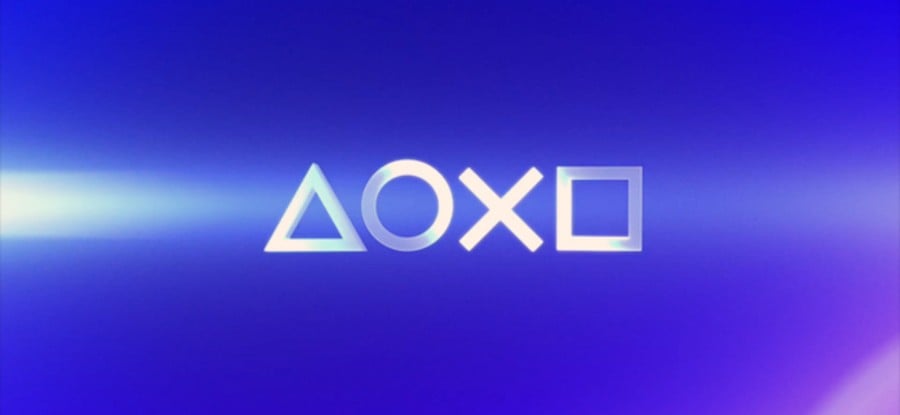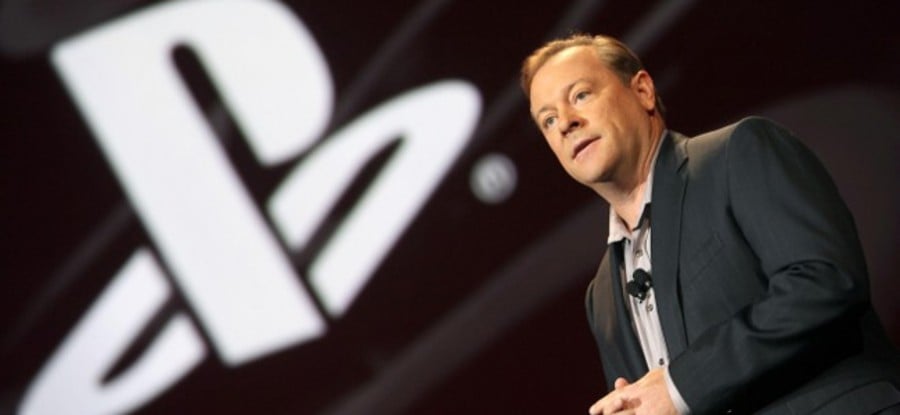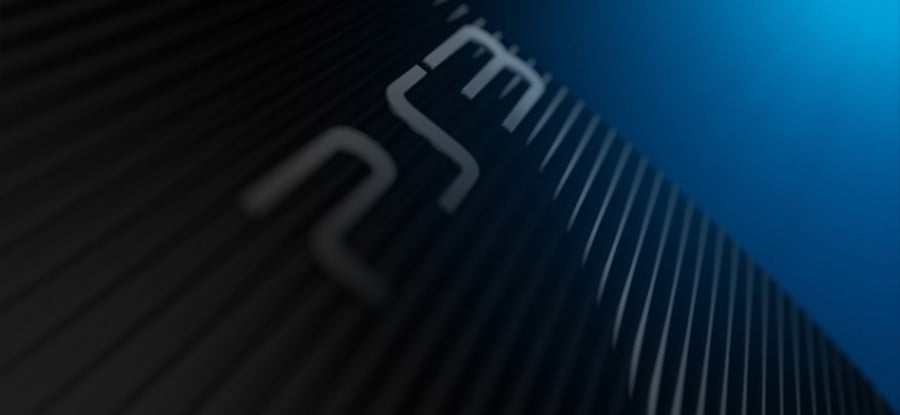
The PlayStation 4 will finally be announced on 20th February. Sony shocked the gaming industry with a mysterious trailer that teased the reveal last night, confirming that it will be hosting a PlayStation Meeting in New York City later this month. But while the imminent announcement is understandably exciting, there are a number of pitfalls that we feel the platform holder must avoid if it wants its next generation system to succeed.
$599 US Dollars

We’ve always took issue with the insinuation that new consoles should be available at a mainstream price point from the moment that they launch. Sony’s hardware is almost always designed with longevity in mind, offering the option to unlock new markets as the product matures. However, while we don’t think that the PS4 necessarily needs to be cheap on launch day, it must sidestep the flaws of the PlayStation 3, and at least be affordable at release.
We suspect that the magic number will be around the $399 price point, a reasonable reduction on the PlayStation 3’s memorable $599 sticker. With the global economy in such a dire position, Sony may struggle to convince consumers to stump up any more, and as the PlayStation Vita evidences, future support depends on the system making a decent dent in the market at release. It’s a balancing act between designing a markedly improved piece of hardware, and keeping costs low.
The positive news is that the PS4 won’t have to deal with superfluous extras such as the CELL processor and a burgeoning Blu-ray drive. It’s apparently taking advantage of off-the-shelf components, which should lower the console’s overall cost. That should result in a net win for both consumers and Sony, especially as the latter can’t afford to swallow a big loss.
Software Drought

Sony tried a novel strategy with the Vita, but it ultimately didn’t pay out. As opposed to having a fairly barren release catalogue with a smattering of heavy-hitters, the platform holder instead opted to release everything it had in one swift swoop. Initially, the strategy worked, but once the novelty of the launch had died down people began to ask what was on the horizon. The answer, unfortunately for the handheld, was not a lot.
In hindsight, it really doesn’t make sense to have so much software available on launch day. Titles end up cannibalising each other, and the inevitable drought leads to bad press. If the PS4 is going to succeed, Sony must take advantage of the console’s full launch window, peppering the market with new releases every couple of weeks. The console will need a couple of tent-pole launch titles, of course – but it will also require a good selection of content for early adopters to look forward to.
Thankfully, the platform holder has more than enough developers in its stable to make the system’s first year on the market something to remember. With Guerrilla Games, Sucker Punch, Sony Santa Monica, Media Molecule, Ready at Dawn, Naughty Dog, and Quantic Dream all rumoured to be working on next generation projects, we doubt that there’ll be any shortage in the software stakes.
Proprietary Problems

For a company that’s always been criticised for its anti-consumer adoption of proprietary technology, the PS3 was alarmingly open. The system allowed you to connect any headset that you wanted, increase your storage capacity with a standard laptop hard-drive, and even install Linux. Granted some of those features got removed as the console matured, but it remains one of the more open options on the market today. And the PS4 must maintain that philosophy.
There’s nothing wrong with Sony releasing and promoting officially branded items, but they mustn’t be the only option. This is an area where the Vita has arguably struggled, with prohibitively expensive memory cards denting its commercial appeal. There’ll be an unnecessary backlash if the PS4 follows a similar path, which could be easily avoided.
There’s no doubt that the manufacturer will have been eyeing Microsoft’s expensive proprietary hard-drives with envy over the past six years, but it must resist the temptation to follow its competitor’s lead. In exchange for the lost profit, the company will earn the goodwill of consumers – and the importance of that should not be overlooked.
Teething Troubles

The PS3 was a notoriously challenging system for developers to work on. For first-party studios, that wasn’t a particularly big deal, as the likes of Naughty Dog and Guerrilla Games could dedicate their time to getting the most out of the machine. But for third-parties, it was a big issue, resulting in lazy and noticeably inferior ports. It’s a problem that the PS4 must address.
Judging by the system’s implementation of off-the-shelf components, the console should be much easier to work with out of the gate. But the platform holder must really facilitate that with great development tools and plenty of external support. The quality of third-party content is paramount, and while parity will depend on the specifications of Microsoft’s machine, the manufacturer must at least ensure that it provides an attractive environment for developers to work with.
Firmware Updates

Sony promised that it would address firmware updates with the Vita, but so far the niggling issue has persisted. Sure, it doesn’t take quite as long to download and install the improved software, but the problem is still there. If you’re eager to play a game, but haven’t updated your system just yet, you’re forced to wait. And that downtime inevitably leads to irritated Twitter messages, which ultimately result in bad press.
To its credit, PlayStation Plus has solved many of these issues, allowing you to automatically overhaul the system software overnight. But while this is a convenient workaround, it would be better if the platform holder limited the frustrations associated with the updates in the first place. Background downloads and shorter install times would certainly help, but we can’t help but feel that less firmware updates in the first place should be the ultimate target.
At the end of the day, it’s still just a minor issue – but updates on PlayStation platforms have become a running joke. If the manufacturer can find a way to neutralise those criticisms, then it will certainly help to pave the success of its impending device.
What do you think are the primary pitfalls that the PS4 must avoid? Do you agree with our suggestions? Let us know in the comments section below.





Comments 24
All fair points.
Though this bit:
"The PS3 was a notoriously challenging system for developers to work on. For first-party studios, that wasn’t a particularly big deal, as the likes of Naughty Dog and Guerrilla Games could dedicate their time to getting the most out of the machine."
I remember reading an interview with a guy from ND who said that the switch to a new platform (PS3 specifically) was stressful to the point of team members leaving their jobs!
The (reported) PS4 architechture will sort these issues out though.
I only agree with pricing and 'teething issues'. Pricing, it's already likely to be at $300/400 from what most are saying. 'teething issues', it switched from CELL to a standard cpu architecture so it should be fixed too.
Proprietary is just part of the business these days. It won't kill the PS4 if it goes this route, but it will hurt a bit (mainly focused on the hdd).
Software will follow no matter what. Not worried about this considering Sony is just about the only ones who push for solid exclusives.
Firmware update.. an update is progress and progress is good. As long as something is being fixed, the more the better.
I agree with all of them. The most critical is the first one in my opinion. I wanted a launch BC PS3 but there was no way I had 650 euros (almost 3/4 of a salary back in this day) to give away so I played mostly on PS2 (a lot of great games come after the release of PS3) and PSP. I bought a PS3 some years later for 340 euros.
Also I don't think I will rush to buy one anyway, I have tons of games to play in PS3 with a lot of core titles coming in the next months.
Almost alll of these, are problems that have already been adressed. By switching from a core processor to a more PC archtecture, third party devs are no doubt, going to be knocking down Sony's door. Plus, like the article says, Sony is using off-the-shelf components. Meaning that the price of the PS4 should be at a very comfortable altitude for Sony and consumers.
Software won't be a problem. Guerilla, Naughty Dog and Quantic Dream are all hard at work, on what I hope to be PS4 launch titles. Sony Santa Monica will no doubt be late to the party seeing as they're still working on Ascension, but it's not a problem.
All in all, I can't wait to see how Sony turns things around this year. Should be exciting.
@nathanuc1988
For the PS3, Propriety was not a big issue. At least in my opinion anyways. If you look at the PS3, third party controllers, hard drive, usb, keyboards etc were accepted by the PS3 with no issues. The xbox 360 had issues with propriety but no one complained about. YOu had to buy microsoft wifi, hard drive, first party or certified third party hardware like controllers, keyboard, and thumb drives.
Given that the PS3 only propriety hardware was the bluray and cell processor, it brought the cost of the ps3 up a little bit.
For PS vita the memory card was an issue, but Sony claim it was essential to ward off piracy.
The main point im trying to make is if Sony decided to introduce propriety hardware to the public they either need to take the hit in cost wise or lower the cost of the said propriety hardware.
Most of that $599 price was "reportedly" for the blu-ray player which Sony used to kill the HD-DVD. Unless they come up with some new color I don't think that will be aproblem this time. ANd sinc e500GB slims go for $299 that shouldn't be a rpoblem either.
So I agree w/ the $399.
Avoid the pitfall of not having a wishlist on the store. Gimme.
I understand I may come across as a 360 fanboy but I am not, I own both consoles and I think my points are legit and should be fixed for the PS4.
@DirectAim It will have Party Chat. Even the Vita has that feature, so I don't think you have anything to worry about there. Security is fine now, too. Navigation is a difficult thing to discuss until we see the new system. I always thought that the XMB was the best out of the current gen interfaces, but it did get a bit bloated.
All fair points, though.
@DirectAim The hack thing again? Talk about beating a dead horse.
Absence of Party Chat doesn't make the PS3 less social. If I want Party Chat, I can pick up my phone and call my friends. People talk about Party Chat like it's some big deal when it really isn't.
Lame Navigation? That's your opinion, and I won't argue with it.
$400 would be perfect for the PS4. Hopefully, there will be enough games for it in it's early lifespan to make it start out with a bang. Let me also add that Uncharted 4 would be a PERFECT launch title!
@Knux It would be, but I don't think it'll happen. I think whatever Guerrilla's working on is going to be a launch title.
Okay, are people still upset over the system updates? Have you guys EVER played an Xbox 360? I swear to god, I had to update 1 game 3 times in a single day. It seems every single day I need to update a game I was playing just hours before hand, and like once a year, Xbox has this Mass-Update to their system that can take up to 5 hours.
Yeah, I am not complaining about 20 minute updates when they are sprinkled so much farther and fewer between then the system's rival.
"In hindsight, it really doesn’t make sense to have so much software available on launch day"
So, we gamers can't be satisfied can we, if we get few launch games (WiiU) we complaint, if there are a lot we get bored, no wonder gaming companies never listen to us.
Give me Killzone 4, The Last Guardian, Versus XIII and MGS5 and I'll buy it at a high price. Hell, I bought PS3 when The Last Guardian and Versus XIII were annonced.
@Hetsumani Savino is quite right. After seeing what happened with the PlayStation Vita, I think it's best to spread those releases out over six months. Obviously you need a handful of big titles at launch, but then you need to keep them coming. There's no point having 20 games at launch, and then nothing for six months.
I'm honestly not even ready or excited about a PlayStation 4 right now. I don't need it and don't want it yet either.
The biggest hurdle they will have is price. Balancing features with affordability. We shall see. Thought the price itself is not that important. It is the price compared to the 720 that will matter. If the 720 is significantly cheaper, people will buy it instead.
One thing Sony needs to fix with the PS4 is the XMB. It was designed to play games, but the playstation now does so much more it is not adequate. Try organising all you downloaded content in folders! you can't. Proper user management with access rights etc. I have 3 daughters and there are some games/demos that I own (many actually) that I don't want them to play, but there is no way to manage this.
There are so many missing features it is really frustrating. With so much downloadable content now, movies, TV etc, they need a real operating system with all that functionality. Where are the Skype, YouTube, Facbook apps etc.
You can bet that Microsoft will be leveraging Window 8 for the 720. Sony needs to do something in this space for the PS4 or it will hurt them badly.
@Ginkgo you actually can make custom folders by pressing square to sort. To change what folder the game goes in, press triangle on it and press information. I'm not sure how the parental guidance restrictions work, but I'd assume that you can set passwords on a game-by-game basis. Hope this helps!
@hamispink : Thanks. ok after reading your comments, and then also looking up a youtube video I finally worked out how to create albums. Unfortunately how painful. You have to physically type in the name of the folder for everything individually in their information details. Where is the copy utility? Drag and drop?
As for parental controls they exist, but they cannot be managed by users. So either I have to turn them on and off every time I want to play a game or not bother. I'm not that patient.
Seriously, thank you. I now have folders for Games, Demos, Betas and Apps which is great.
Unfortunate there are many things that you can't move to an album. Simply no option and typing the folder name item by item gets old really quickly, even with predictive text. I still believe that my comment stands. The PS4 needs a "real" operating system. The XMB doesn't cut it.
But I am glad that I now have my context sorted by folders!
@Ginkgo man, you can use USB keybord for typing, if you like. Not sure about mouse, though.
I think a $300-$400 price range is very doable for both sides, since you can easily build a budget PC that beats current consoles for that much, but they have a much easier time due to lack of OS license fees and better prices on parts. I'm really curious about the CPU since they're both supposedly using a 1.6GHz 8-core amd CPU, its possible they're using the same model (amd's "Jaguar" mobile chip is what some people theorize the Xbox's CPU to be).
Maybe they could use an "administrator" and "standard" account setting like PCs use for security settings. That way only "admin" accounts can access locked content. I'd be even better if you could even change an individual programs's block status, like certain games you deem appropriate despite the rating.
I need native 1080p to become the standard, and 4k can be the superHD option. Pixel for pixel representation! No giant squares instead of tiny dots!
I also require MGS5, Fallout 4, and MH4 to be launch titles, or else I'm gonna reconsider taking up underwater basket weaving
some good points there but i think some of them have already been addressed such as the fact they are using a simpler system to develop for in the PS4, as for updates i don't mind them as they fix problems or add new features but maybe they could do it like the WiiU where it downloads in the background and still lets you play your games (they even let you do this on game updates too) if they do that then i think they will be fine
Show Comments
Leave A Comment
Hold on there, you need to login to post a comment...